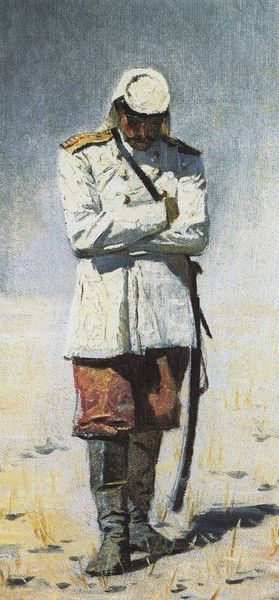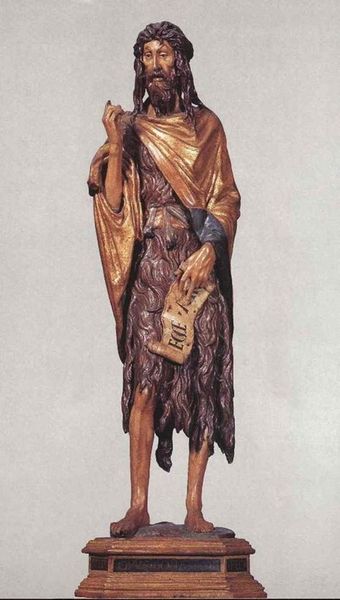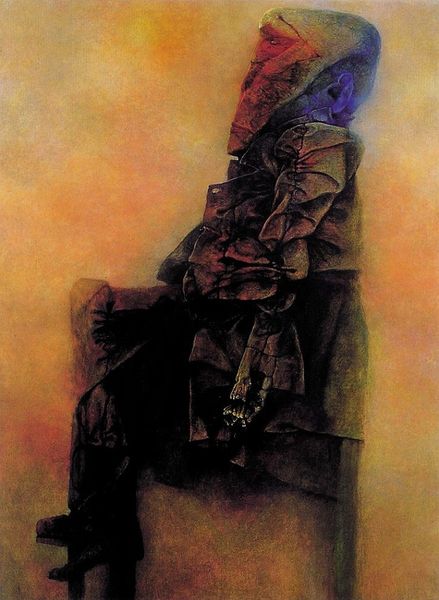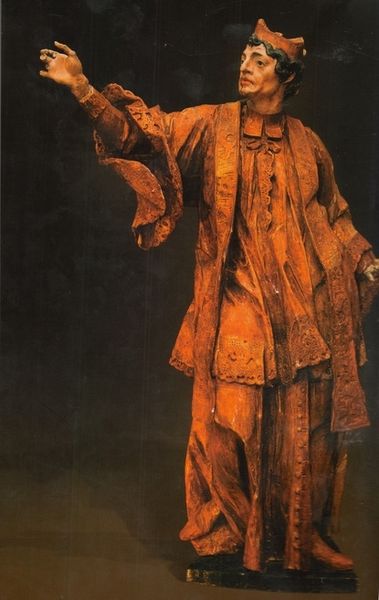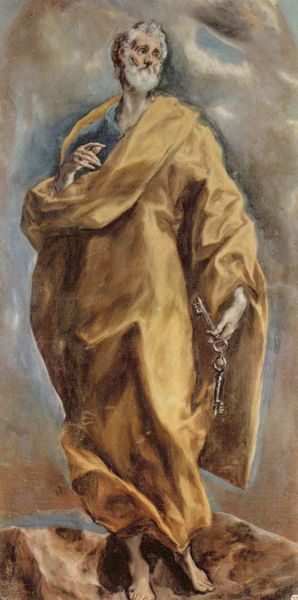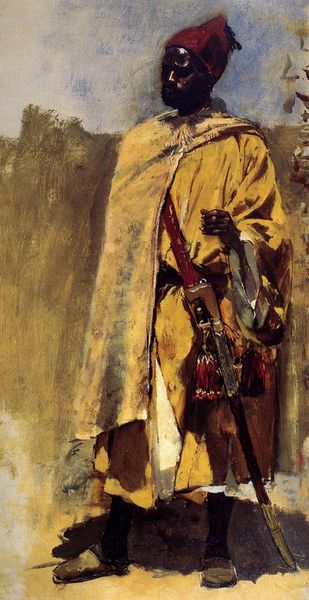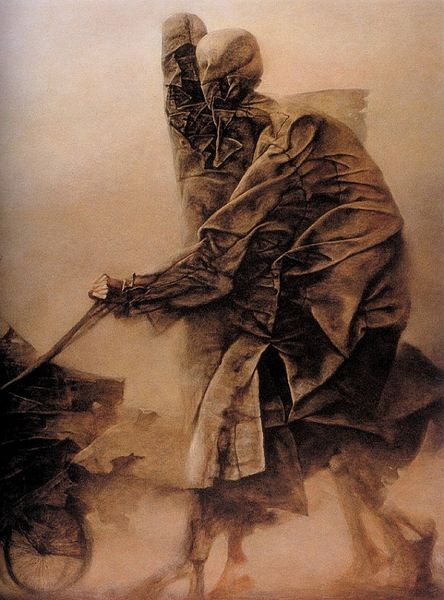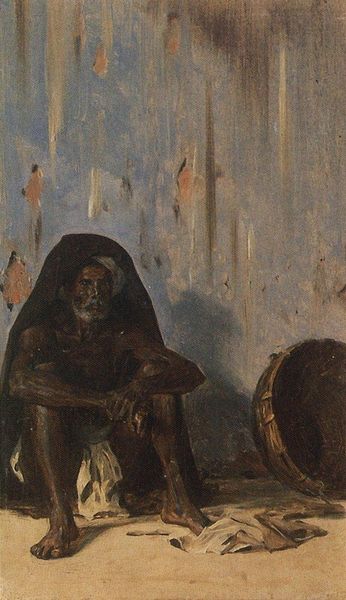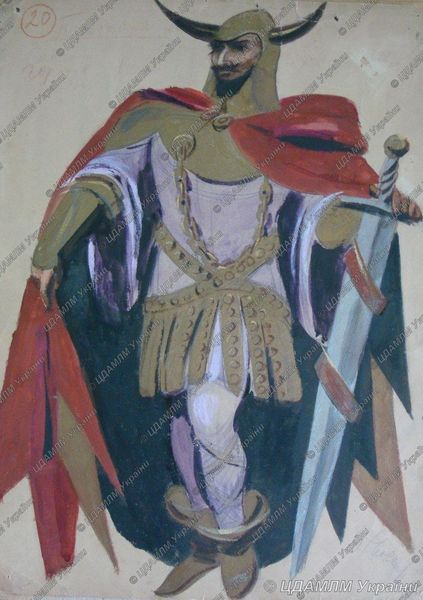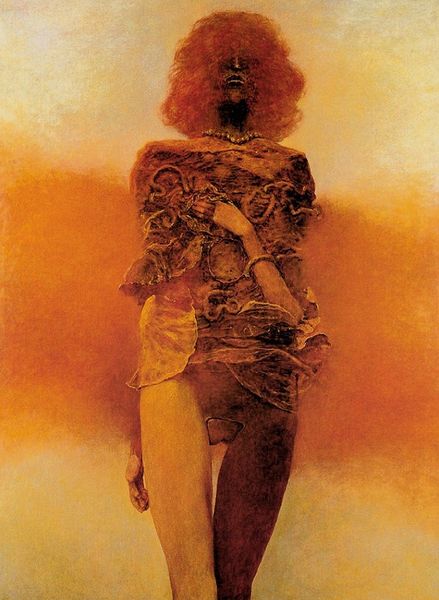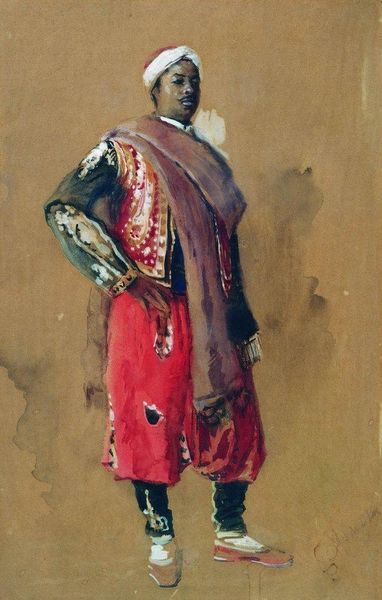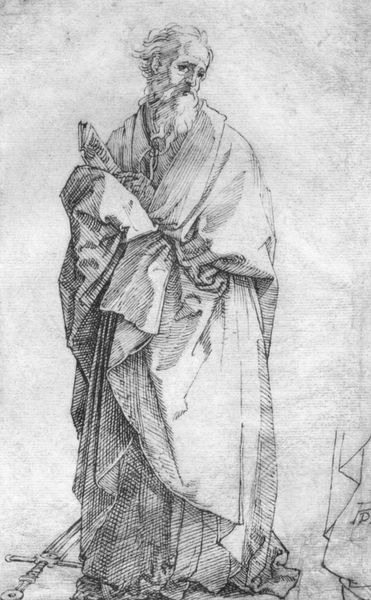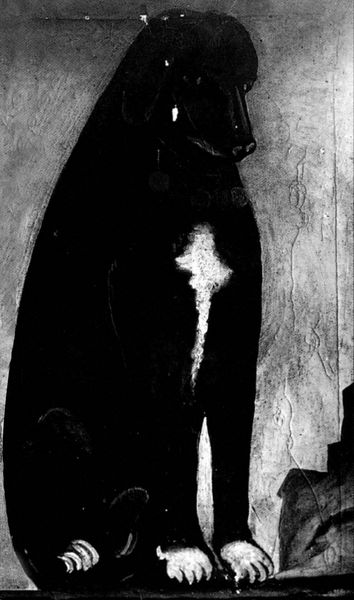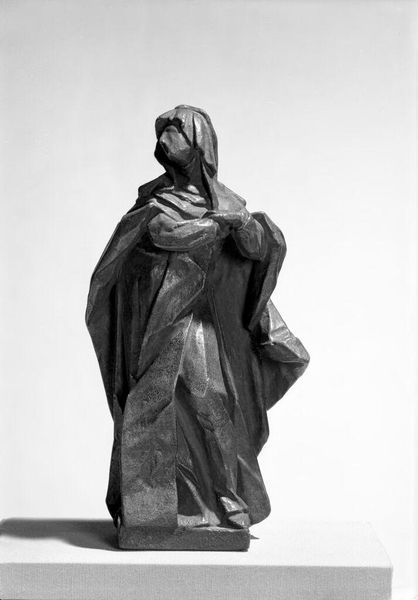
Copyright: Public domain
Editor: Vasily Vereshchagin's "Kalmyk-Lama," painted in 1873 using oil, presents a figure in striking ochre robes against a rusty red background. The composition feels austere, almost monumental. What can you tell us about the historical and social context that shaped this portrait? Curator: This portrait emerges from a period of intense Russian expansion into Central Asia. Vereshchagin himself was embedded within this colonial project, a military painter capturing what the Tsarist regime wanted to see. How do you think the social power structures influenced this image of the Lama? Editor: So, while it appears to be a respectful study, you're suggesting the painting may be tied to colonial power dynamics? The pose does seem somewhat withdrawn, perhaps reflective of a complex relationship with the Russian gaze. Curator: Precisely. The "Romanticism" tag is interesting. We often apply Romanticism to works that evoke feelings of the sublime, or explore themes of exoticism. In what ways might this painting be considered Romantic, and what ideological work does that do? Editor: I see. It’s romanticizing the exotic "other," reinforcing a power imbalance. I initially missed the subtleties of how Vereshchagin's position within Russian imperialism influenced his portrayal. Curator: Exactly! By framing it through a lens of aesthetic appreciation without acknowledging the concurrent power structures, the artwork runs the risk of glossing over complicated historical injustices. Editor: It's given me a lot to consider regarding the ethics of representation and the historical forces at play, especially within Romanticism and portraiture. Curator: Understanding art necessitates critically examining how its creation and reception intertwine with the broader socio-political environment. These sorts of art pieces highlight and question who has the power to represent whom.
Comments
No comments
Be the first to comment and join the conversation on the ultimate creative platform.
